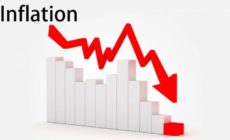Inflation drops to 12.1%
- Posted on
- Comment
 The average change in prices of goods and services, measured by inflation, dropped to 12.1 per cent in June this year.
The average change in prices of goods and services, measured by inflation, dropped to 12.1 per cent in June this year.
The rate was 12.6 per cent in May and the decline in the June figure was due to corresponding declines in the food and non-food inflation baskets.
The June figure was announced at a press conference in Accra Wednesday.
Factors
The acting Government Statistician, Mr Baah Wadieh, said the decline was the outcome of a drop in the combined effect of the food and non-food inflation rate within the period.
The year-on-year food inflation rate for June 2017 was 6.2 per cent compared with the 6.3 per cent recorded in May 2017.
However, the year-on-year non-food inflation rate of 15.1 per cent was more than two times that of the food inflation rate, which was 6.2 per cent.
The year-on-year inflation rate for imported items was 14.1 per cent, about 2.9 percentage points higher than the 11.2 per cent recorded for locally produced items.
“The main price drivers for the non-food inflation rate were transport (23.1 per cent), recreation and culture (20.8 per cent), furnishings, household equipment and routine maintenance (20.6 per cent), clothing and footwear (16.6 per cent), miscellaneous goods and services (15.4 per cent) and health (14.3 per cent).
“The price drivers for the food inflation rate were fish and sea foods (12.7 per cent) and meat products (9.5 per cent),” he said.
Mr Wadieh added that five regions (Greater Accra, Upper West, Ashanti, Brong Ahafo and Western) recorded inflation rates higher than the national average.
The Upper West Region recorded the highest year-on-year inflation rate of 13.1 per cent, followed by the Greater Accra with 13.0 per cent. The Upper East Region recorded the lowest rate of 8.6 per cent.
-Graphic










 (Selorm) |
(Selorm) |  (Nana Kwesi)
(Nana Kwesi)